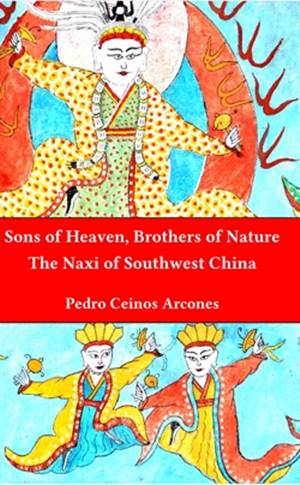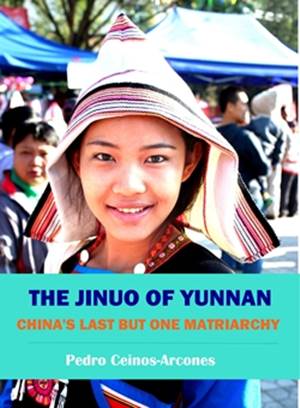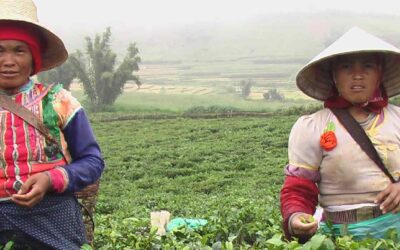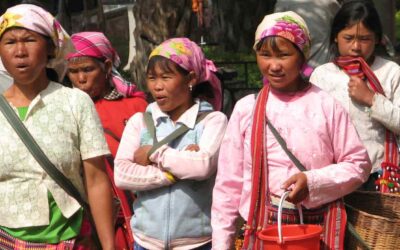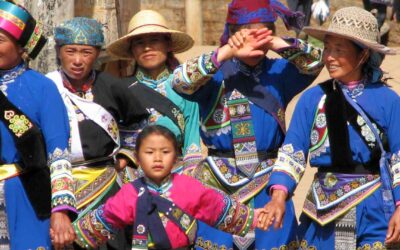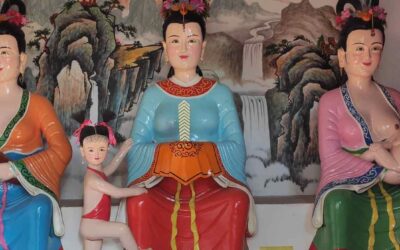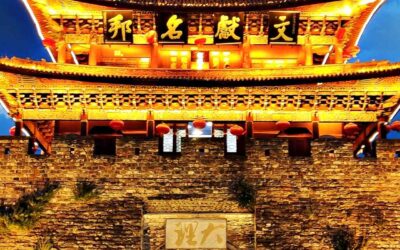Hidden in the tropical mountains of China’s southern border lives one of its most interesting minorities: The Jino nationality. With a population of only 21,000 people they are one of the less known ethnic groups in China, who in the past were often confused with the surrounding minorities. The study of their culture started only in the last decades of the 20th century and showed the world an ethnic group characterized for the strength with which they preserved their matriarchal tendencies and their surprising adaptability to their tropical environment.
The Jino inhabit a cluster of villages dispersed along the mountainous forest of the final Chinese section of the Mekong basin. In this sometimes impenetrable succession of mountains, a complex environment where survival has been always difficult, the Jino developed throughout the centuries a sophisticated culture that allowed them to make sustainable use of the limited resources available.
The Jino are the last of the national minorities officially recognized by the Chinese government. Before 1979, when their ethnic status was granted, they were considered to be Dai, Hani or Yi, depending on the areas where they lived. When Chinese anthropologists began to study the main characteristics of the Jino culture, they discovered to their surprise that the Jino had many traces of a past matriarchal society, only recently disappeared, and it was also found that they lived in villages where the land was a common property worked on together by all the villagers and whose fruits were shared equitably, similar to the game caught on their hunting expeditions.
The shadow of their former matriarchy, and of their goddesses, was found everywhere in the Jino life and culture, as a giant umbrella that covered their main activities, especially prominent in their myths and legends, as well as in the spiritual life that directed their everyday activities: farming and hunting, house building, village ceremonies and rituals performed by their main religious specialists.
The apparent simplicity of this original society slowly revealed a complex technology developed by hundreds of years of adaptation to their particular environment, a technology that allowed them to continuously inhabit lands that otherwise would have been fit for habitation only for a short time. At the heart of this technology was a reverential respect for the mother earth, embodied especially as the Goddess of the Fields and the Lady of the Beasts, and an exhaustive knowledge of the different kinds of soils, their responses to the changing climatic conditions, to the seasonal weather oscillations, and to different rice varieties. Their ideas about the characteristics of their soils basically correspond with modern geological classifications; their calendar of 11 months (designed to remember the main steps in the creation process carried on by the goddess Amoyaobai) fits perfectly with their agricultural activities; their knowledge of more than 100 varieties of rice allowed them to optimally use every natural resource.
The organization of labor along the seasons was designed to allow the maximum yield for the agriculture, fish and hunting in a sustainable way that preserved the ecological systems of their territory. They were complemented by the complex gathering of roots, tubers, plants, fruits and flowers, bamboos and mushrooms, reaching several hundred kinds of vegetable species, of which different parts were used for specific purposes and were extracted with original technological processes.
The Jino are one of the most complex chapters in the history of the adaptation of humankind to the natural environment. Their culture provides a master lesson of sustainable economy. Their main features, the cult of the great goddesses and of the wood drum that symbolizes the soul of the village, lead us to a primitive duality in which human beings became the central axis in the relationship between the all-powerful heaven and earth.
Duality permeates all the religious and social concepts of the Jino; they consider themselves to be the product of the marriage of two mythic siblings that survived the flood floating inside a big wooden drum: brother Mahei and sister Maniu. Their descendants divided themselves to inhabit matriarchal and patriarchal villages, a concept still alive nowadays, as most of the villages are composed of families that belong to two exogamous clans, whose members cannot marry inside the clan. Villages are governed by the two eldest people of each of these clans, the zhuoba or the mother of the village from the first clan that established the village, and the zhuosheng or father of the village, representing the second clan. Each of them keeps in his house a wooden drum, a reminder of the way the ancestors of the Jino survived the great flood, the mother drum placed before the house of the “mother of the village” and the father drum before the house of the “father”.
This system of government of the villages is one of the most democratic known in the anthropological register as each person will suffice to live as long as is needed to become a leader. His rule is aided with the assistance provided by a council of elders and neighborhood organizations where groups of families are responsible for different communal tasks.
The psychological adaptation made necessary to survive in the imposing nature where the Jino live, caused them to develop original concepts, including respecting nature as a mother through impersonating numerous goddesses and feminine deities, the ritual marriage between the Jino spiritual leaders and these goddesses, to provided them with some powers, and the care kept along the whole productive process to not destroy the spiritual balance between humans and nature, in a way that even the capture of a small bamboo rat or a little bird was accompanied by the corresponding ritual to thank the incumbent goddess. This concept of the universe based on the balance between humans and nature, is also reflected in their material culture, where villages, houses and even people’s clothes contain symbols of this cosmic integration.
The Jino have preserved a ritual cycle that reflects the yearly natural cycle and humans’ adaptation to it. During their two main festivals, Temaoke, a happy homage to the blacksmith who provides them with the tools needed for agriculture at the beginning of the year, and Luomaluo, the sad mourning for the death of the Great Goddess Amoyaobai, life and death succeed each other as part of a cosmic cycle common to all natural beings.
Nowadays the complex agricultural system that for centuries sustained the simple lives of generations of the Jino people is quickly transforming so that economic crops are given priority. Rubber, tea, banana and other fruits and ornamental trees are found everywhere, and with them the promise of a possibly richer future for the Jino. A future, however, full of challenges in which their wellbeing will not rely anymore in their perfect knowledge of their natural environment but in the fluctuations of markets that they neither understand nor are able to control.
This book is the first comprehensive introduction to the Jino life and culture published in English. In the following pages we will try to give the reader a general idea of the main characteristics of the Jino’s lifestyles, culture, religion and history. To do it we have divided the book in eight chapters. The first, General aspects of Jino culture, is a basic introduction to the Jino name, geographical localization, natural environment, languages and dialects, with a special mention of their alternate signs languages, and Jino ethnic branches. The second chapter is about Jino history, from their mythic account of creation by the Great Goddess to the establishing of their main branches by powerful shamanesses, and the account of the process that changed their society from matriarchal to patriarchal. Special emphasis has been put on trying to relate their mythic account to a workable old history of the Jino. The third chapter, Jino Religion, introduces their main beliefs, deities (most goddesses), religious specialists and rituals. The fourth chapter is about the Jino Life Cycle, their ideas about birth, rites of passages, marriage ways and funeral customs are described, and the matriarchal tracts in their culture fully exposed. The fifth chapter contains a description of the main festivals of the Jino, especially the Luomaluo and Temaoke festivals. The sixth chapter Material Culture of the Jino describes their economic activities, with special attention paid to their complex agricultural system and the structure and symbolism of their villages, houses and clothes. The seventh, Intangible culture of the Jino, provides the reader a short introduction of their main myths and legends, song and dances, and the symbolism of their wooden drum. In the eighth, Contemporary life of the Jino, we outline the changes that the last decades brought to the Jino life and culture. In the appendix we provide the first translation of their creation myth: Goddess Amoyaobai created the world.
Extracted from Ceinos-Arcones, Pedro. The Jinuo of Yunnan: China’s last but one matriarchy.
More posts on China ethnic groups
The Bull that Shaped the World and Other Sacred Bovines among the Bulang Minority
The Bull that Shaped the World and Other Sacred Bovines among the Bulang Minority The Bulang people (布朗族), an Austroasiatic ethnic group primarily inhabiting Yunnan’s tea-growing highlands, revere the ox as a sacred being intertwined with creation, agriculture, and...
The Lahu Matriarchy: An Egalitarian Dyadic Society in China
The Lahu Matriarchy: An Egalitarian Dyadic Society in China From the book: Mothers, Queens, Goddesses, Shamans: Matriarchy in China (Miraguano, Madrid, 2011) The egalitarian society of the Lahu drew academic attention with Du Shanshan’s study Chopsticks Only Work in...
An Old Book on the Sani-Yi Minority
An Old Book on the Sani-Yi Minority One may wonder whether it makes any sense to read, in the first decades of the 21st century, a book written at the end of the 19th. Clearly, the person who has spent some of their time translating it, revising it, updating the old...
Sexual aspects of Gu venom
Gu illness resulted from a contamination by gu poison, which a recent analyst has characterized as “an alien evil spirit which entered [the] body and developed into worms or some similar animal that gnawed away at the intestines or genitalia.” This poison was thought...
Sunset in Dali
No Words Fuxing Rd from the South Gate. Dali, Yunnan.Corner in Fuxing Rd, Dali, Yunnan.Night market at the south of the South Gate. Dali. YunnanLast posts
The five secret temples of the lamas in Lijiang
The five secret temples of the lamas in Lijiang Religions of Lijiang Although the city of Lijiang is known primarily for the Dongba religion practiced by the traditional shamans of the Naxi, also called Dongba, who with their rituals administered the religious and...


